Recommendations for gardeners: how to plant grapes correctly
When growing grapes for yourself or for sale, you need to remember that it will give the first harvest only after three years, and this is subject to favorable conditions and proper care.
Content:
- The best place to grow grapes
- Optimal time for planting grapes
- Hardening and planting depth of the bush
- Basic rules for planting grapes in spring and autumn
- Grape care rules
The best place to grow grapes
The grape variety is selected based on the region of its cultivation, planting and care is also carried out taking into account the recommendations for a particular variety.
Grapes are a light-loving plant, so you need to choose the appropriate place on the site.
For vines, it is best to choose the south, west, or southwest sides of the building. During the day, the walls on these sides are heated by the sun and give the plant additional heat. The more the grapes receive heat and sun, the more juicy and sweet the berries will grow on it, and this also makes it possible to successfully grow grapes in the northern regions of the country.
It is not recommended to grow grape bushes at the bottom of the slope, since in frosty weather, the minimum temperature will drop exactly there.
Also, the shrub should be located 5 meters from the nearest trees so that their root systems do not intersect. The grapes are not particularly whimsical to the soil on which it will grow, but the less prepared it is, the slower the course will grow, and the first fruiting will occur in 5 years at best. In addition, one square meter will yield a yield of up to 1.5 kg. Only pre-treated soil is the key to strong and fertile grapes.
If there is a choice, it is better to give preference to humus, fertile, powerful soils, including black soil.
The occurrence of underwater waters should ideally be about 3 meters. Fast and good growth of the bush expected on stony and dark soils, such land absorbs solar radiation best. Light-colored sandy soil will provide volumetric lighting, as the leaves receive heat from both the sun and the soil, which reflects the light.
Optimal time for planting grapes
Planting grapes carried out both in spring and autumn. If there are annual, but already lignified seedlings, then they are planted from April to May, if green vegetative seedlings, then from May to June.
In autumn, grapes can be planted until the soil begins to freeze:
- The procedure itself is performed identically at any time of the year.
- Only if the planting took place in the fall, then the seedling needs to be well protected from frost so that it can endure the winter.
- To do this, it is covered with a cut plastic bottle with several holes for air to pass through.
- The ground around the seedling is watered with plenty of water and loosened.
- Until frost comes, the planting pit is insulated with peat, pine needles or sawdust, but this is not a prerequisite.
- If it is not possible to use such insulation, then a mound up to 30 cm high is made over the filled hole.
- Only healthy seedlings can be planted.
To understand that he suitable for growing you need to look at its roots, on the cut they should be white, not brown, the shoot is well-ripened with a bright green color. The seedlings must be fresh, not dried, even slightly. If you press on the eyes, they should stay in place and not fall off.
Before planting, the seedling is soaked for 12 to 24 hours, the one-year shoot must be cut off, leaving only 4 eyes.
On the lower nodes, the roots are refreshed, and on the faithful ones they are completely cut off. If the seedling was grown from shortened cuttings, then the upper roots are only refreshed. To avoid fungal diseases in the future, it is recommended that the growth be treated with Dnoka solution.
In autumn, the grapes are planted in moist soil. The autumn season has several advantages: the growing season of the plant increases, because the development of the plant will begin in the spring, when the temperature is favorable. In addition, it will not be necessary to store the seedlings in special conditions and constantly monitor them, since the planting takes place immediately after digging out of the school.
Hardening and planting depth of the bush
Before planting plants in spring, they need to be hardened, otherwise the harsh bright sun can burn the leaves:
- The first 5 days they are covered with a canopy, then it is possible without a canopy, but still under the trees, then you can keep it in direct sunlight for a week or two.
- If the seedling was grown in conditions of insufficient lighting and high temperature, then hardening lasts 1.5-2 times longer.
- These seedlings are very sensitive and can be identified by their long shoots and light leaves.
If the seedling was not hardened, then when planting in the spring, it may react inadequately, if you do not make mini-greenhouses, then the plant may begin to behave as when autumn comes: stop growing, begin to ripen and lignify.
This is not critical, since by the end of June all processes will be normalized.
For grapes, choose the right planting depth:
- The depth directly depends on the size and stability of the root system, soil relief, climate, etc.
- In the south of the country, grapes are not planted as deeply as in the north or sandy soil.
- If the climate is favorable, then you need to build on the frost resistance of the rootstock, grafted seedlings do not like depth, in contrast to self-rooted seedlings and cuttings.
- If self-rooted seedlings are short, and the required planting depth exceeds it in size, then the depth is left as standard for the given climatic and soil conditions.
- In this case, a hole is left near the plant, and little by little, due to new summer shoots, the stem increases. The hole is pre-mulched.
The further productivity of the plant depends on the depth and density of planting.
It will be almost impossible to correct this error in the future. To calculate the row spacing and plant spacing, the following factors are taken into account:
- If the soil is fertile, then the distance increases so that the bush receives maximum nutrition.
- If the bush is vigorous, then the distance should be greater.
- If the bush is planned to be developed over a large area, then it is calculated in advance how much land will be allocated for it.
- The width between the rows depends on whether there will be a shelter in winter or not.
Basic rules for planting grapes in spring and autumn
Prepared in advance landing pit, on black soil, the depth is 25 cm, on clay soil with sand 30 cm. The pit is compacted and so that the soil shrinks, it is watered with 3 buckets of water every 7 days, the procedure must be repeated 2-3 times.
After a week, you can prepare a hole for a container 55 cm or 65 cm deep for black soil and sand, respectively.
The hardened seedling is removed from the container along with the earth lump, lowered to the planting depth, covered with soil and compacted. A structure is erected nearby, along which grapes will curl and a sprout is attached to it.If the plant has not been pre-hardened, but a shading screen is constructed for 10 days. In the first year, there should be only one shoot on the bush, so stepchildren should be periodically removed.
To plant grapes in spring you need:
- Dig a hole measuring 80 * 80 * 80 or 80 * 80 * 105 on the black earth and on the sands, respectively.
- Make a hole for a container about 60 cm in size.
- Move the seedling into the hole along with the earthy clod.
- Establish an escape facility.
- Cover the hole with soil and water.
- Apply for 7-10 days.
- To plant grapes in autumn you need:
- Dig a hole 80 * 80 * 80 for any soil.
- Introduce into the pit mineral fertilizers and humus.
- Spread a layer of 10 cm of soil with fertilizer.
- Spread a layer of 5 cm of fertile soil.
- Place the seedling in the center of the hole and cover with earth.
- Cover the seedling with a plastic bottle with holes, sprinkle with water.
- Make additional shelter before winter.
Grape care rules
For a good harvest, it is important to know not only how grow grapes properlybut also how to care for it.
There are several operations that need to be carried out in a timely manner for the successful development of the plant.
- Wreckage.
- Pinching growth points.
- Stepping out.
- Chasing.
When the grapes grow more than 10 cm in length and the inflorescences are visible, a fragment of extra shoots is made:
- Weak, improperly growing shoots, tees and twins (which come out of one eye).
- Inflorescences can be removed if it gives an extra load, usually the third and fourth on one shoot.
- The growth points are pinched to stop the growth of the shoots. This is done at the age of 1-2 to stimulate the growth of the stepchildren and then the sleeves.
- Also, growth points are pinched on old plants that have suffered from frost, also to form new stepchildren for the next year.
- Pinching is done with a fingernail until the shoot is coarse at a distance of no more than 8 leaves from the brush.
- When the length of the stepson reaches 20 cm, he is also pinched so that the nutrients are not wasted, but go to the ripening of the vine.
Grazing is done so that the bunches and shoots are not obscured by the leaves of the stepsons.
This is done only in complex resistant plants, 2 leaves are pinched. Only on annual plants, stepchildren are completely removed. The chasing procedure is carried out at the end of August and consists in removing the upper part of the shoot. This is done with a pruner to stop the growth of certain shoots. Do not rush, the operation is carried out if there are more than 10 leaves on the shoot, otherwise you can provoke the formation of stepsons and the growth of buds, which should appear only next year.



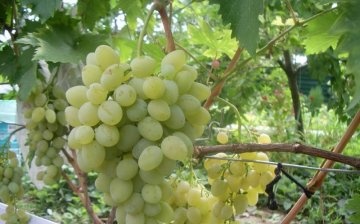
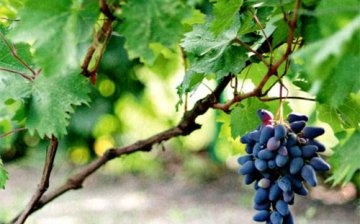
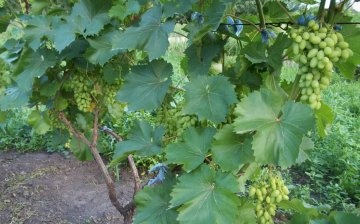

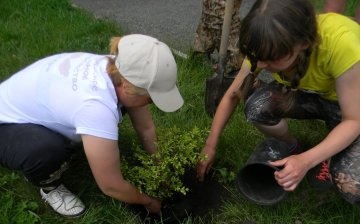
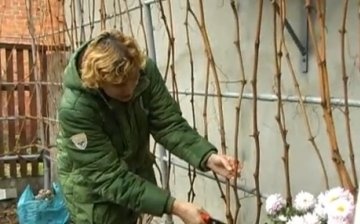






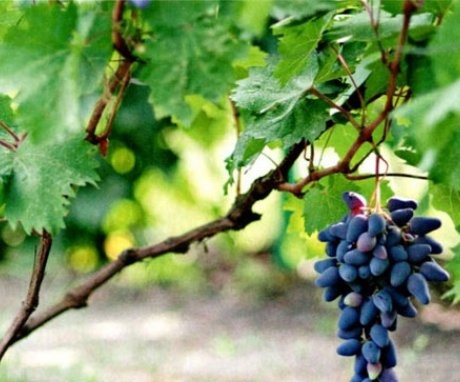

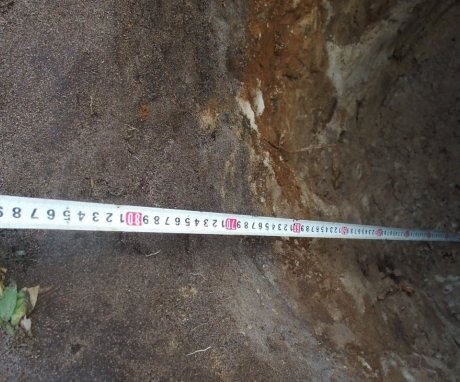
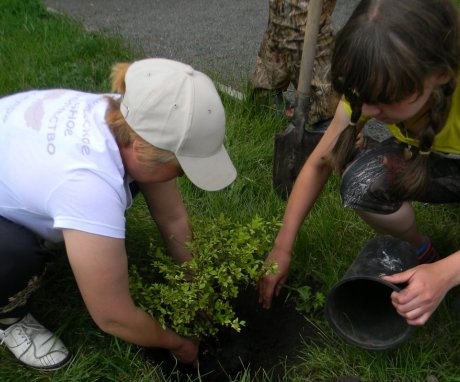
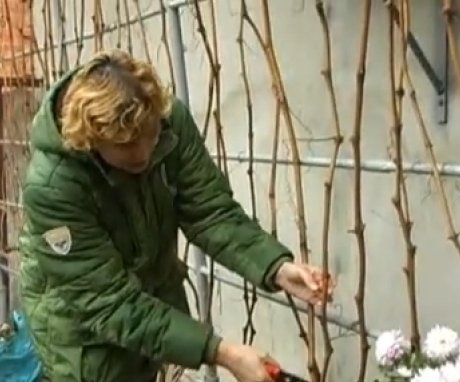
With such recommendations, it's not scary to start, in April I will plant grapes, I wonder how far different grape varieties should be from each other?